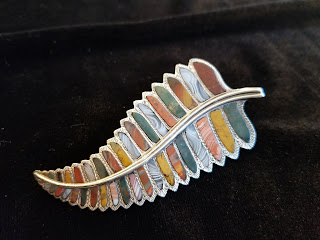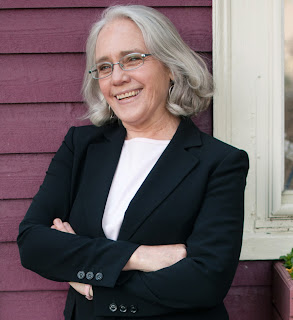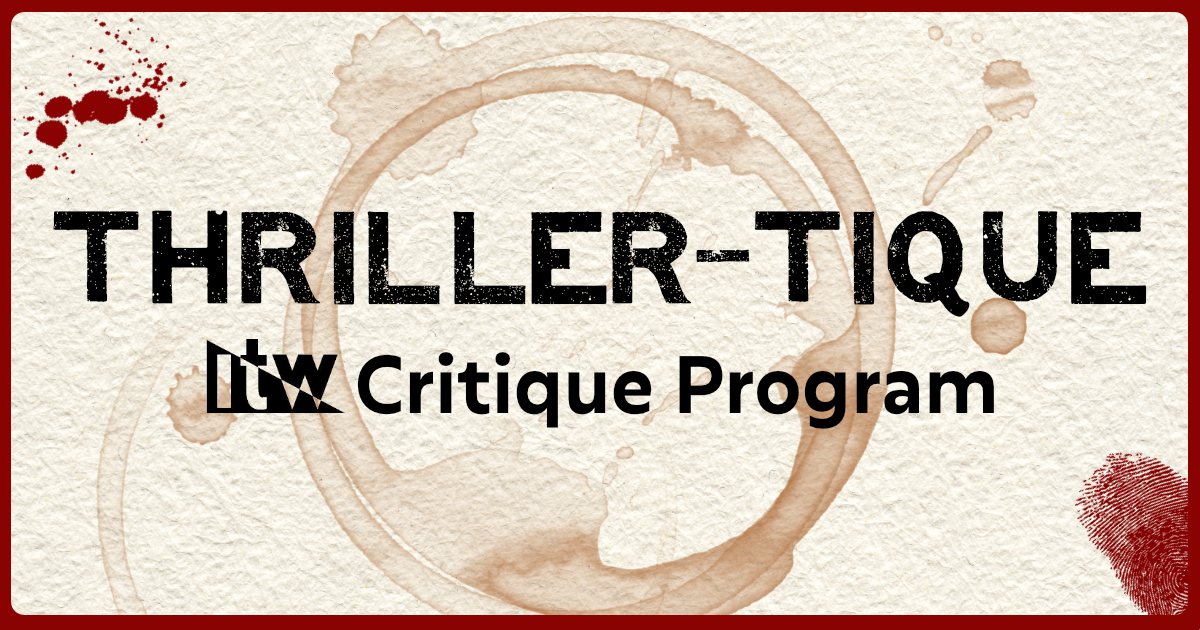In South Lick,
Indiana, fine foods and classic cookware can be found at Robbie Jordan’s Pans
’N Pancakes. Unfortunately, her country store also seems to stock up on murder
. . .
In Batter
Off Dead, Robbie and her new husband Abe O’Neill are enjoying a
summer evening in the park with fellow townsfolk excited for some Friday night
fireworks. In attendance are senior residents from Jupiter Springs Assisted
Living including Roy Bird, father to South Lick’s very own Police Lieutenant
Buck Bird. Despite his blindness, Roy is a member of his group home’s knitting
circle, spending quality time with some lovely ladies.
But when the lightshow ends, one of the knitters who sat
with Roy is found dead, a puncture wound in her neck. The poor woman’s death
echoes that of Buck’s mother and Roy’s wife—an unsolved homicide. To help find
the killer, Robbie’s going to have to untangle the knotty relationships deep in
the victim’s past . . .

Thanks so much for inviting me back to this fabulous blog! Many
of my recent books do feature names chosen by charity auction high bidders.
Donors to the cat rescue society or our local organization that helps families
in need with housing, food, and school backpacks love the idea so much. It’s
free and easy for me to work a name into my manuscript, and sometimes the
donated-name character surprises me! Adrienne’s Joan and Edna turned out to be
great characters in Batter Off Dead, with one of them mentioning a
possible clue to Robbie.
You are so prolific. How many series are you currently
writing? What’s your typical writing day?
Thank you, Kait. I am currently writing the Country Store
Mysteries and the Cozy Capers Book Group Mysteries. Both have been renewed for
several books ahead. My Kensington editor has also asked me to write a new cozy
series set in California. I’m super delighted to stage stories in my home
state, but … sshh. Don’t tell anybody - I haven’t signed the contract yet! In
addition, I have a new historical book in the works, which takes place in
Boston in 1926. It’s out with an independent editor now. Fingers crossed that
it sells.
I am always writing by seven in the morning. I naturally
wake up early. I need about an hour of catching up with the world before I open
the work in progress at seven. I check in with Ramona’s Sprint Club (feel free
to ask offline) and start making things up (or polishing that first draft). I
work until about eleven. By then my creative brain is all done. I go for my
power walk, often plotting as I go, then eat lunch and spend the afternoons
doing other authorly things like writing guest blog posts.
You excel at short stories as well as novels. Is your
writing process different for each? Do you start with plot or character, title
or story? Are your short stories all mysteries or do you use the different
formats to branch out to other genres?
Thanks for those kind words. All my short fiction has been
crime stories except the first two stories back in the 1990s (well, and “Viking
Girl,” published when I was nine in the Pasadena Star News).
I love mixing things up in the short form. Often the
narrator is the bad guy - or gal, more accurately. Sometimes she gets away with
it, sometimes she doesn’t. Where I start varies with the idea. I might envision
a particular character and ask Suppose? And What if? Or maybe I recently heard
of a new poison and want to use that. Or I write to a theme, as in the Mystery
Writers of America pandemic-year anthology, which had a theme of Home. MWA
rejected “Bye-Bye, Jojo” – but Ellery Queen Mystery Magazine took it
instead. It came out last week in the March/April issue.
My novels also vary as to what sparks the story idea. My
brain might conjure up a particular bad guy. I could start with a curious news
story I heard of, or an intriguing murder method. I’d say it’s different every
time.
I’ve read that you’ve been a mechanic, a tech writer, an
organic farmer, have your PhD in linguistics, and taught English in Japan. Have
you ever worked in or run a restaurant?
Ha! No. I talk to people who have. I visit diners and watch
their short-order cooks. One of my sons worked for a small breakfast and lunch
restaurant. And I imagine stuff. So far, no readers have criticized how Robbie
Jordan runs Pans ’N Pancakes, so I guess I’m mostly on track.
You bravely tackle the topic of the pandemic with the
reference to Samuel and Adele skipping a year of travel and later an elbow
bumping reference. Have you decided to tackle the years of living isolated in
the Country Store mysteries? Did you get any pushback from your editor about
that?
I mostly heard from fans who said they weren’t ready to read
stories set during the pandemic. As we
are not yet out of danger, I certainly didn’t want to write one and still don’t.
But I also didn’t want to completely ignore this awful period we’ve all been
going through. My editor didn’t blink as I set this book in a vaguely post
pandemic time.
Is South Lick, Indiana a real place? As a California girl,
how did you come to select Indiana as your setting?
Ah, great question. South Lick is not real, but Brown
County, Indiana, absolutely is. I hit on the name when I was out visiting and
saw South Lick Road and South Lick Creek in the vicinity of Beanblossom. The
larger and real town of French Lick is about an hour south, so I knew that kind
of name wasn’t unheard of in the area.
I spent five years earning a doctorate in Bloomington, a
university town in the next county to the west. My great-great-great
grandfather founded Indiana University. My grandfather was captain of the
basketball team in 1916. My father was an undergrad until he was drafted into
WWII. There’s a Maxwell Hall on campus, a Maxwell Street and a Maxwell Lane.
How could I not want to get my graduate degree there? This
Californian absolutely fell in love with the region, and when my editor agreed
that a Country Store series sounded good, I ran with the idea.
South Lick seems like a sleepy small town, but it has
attracted a diverse group of people. Is southern Indiana as cosmopolitan as it
sounds?
I always try to reflect the spectrum of humanity in my
books, whether it’s shades of skin colors, various preferences and faiths, or
ages. The university in Bloomington certainly has people from everywhere, and I
think there is spillover into Brown County. The county has a reputation for
being artsy and also fiercely independent. I’ve drawn on my imagination, of
course, in creating the characters. But they are all plausible residents of
South Lick and surrounds.
In Batter Off Dead, the mystery unfolds over decades
with the past intruding on the present. Was it difficult to write and keep the
murders and clues for each murder straight?
Not really. I’m not much of a plotter, as many people know,
and I was pleasantly surprised at the connections my characters revealed to me.
Lt. Buck Bird’s family has become tantalizingly close in
this offering. We meet his dad, his grandmother, learn about his mother’s
murder, and his immediate family. Will we get to see more of these delightful
(and in some cases mysterious) folks in future works?
I’d better bring back his grandmother, Simone, while she’s
still alive. Yes, she’s still a pistol at one hundred years old, and I expect
she’ll make a showing in book twelve. (I missed the chance in Four Leaf
Cleaver, to release next March.) I also really like Roy, and Buck’s sweet
nephew, Nathan. We’ve still never met Buck’s wife or his children, and I hope
they’ll decide to stroll onto the page, too.
Speaking of Buck, how did the very inquisitive Robbie get
herself to give Buck a pass when he mentioned his mother’s murder?
I honestly have no idea. Sorry!
Robbie tells Corinne Beedle that she tempers her gazpacho –
are Indianans spice-adverse as a general rule?
I wouldn’t want to make a blanket pronouncement about
Hoosiers, but I think many Midwestern Americans wouldn’t appreciate the level
of hot peppers I and others loved in southern California.
Corinne and others use phrases and expressions that one
would expect to hear in the deep south, for example, “I’d love me some spicy
soup.” Later in the story Robbie remarks on Buck’s aw-shucks grammar. Are
southern turns of phrase hallmarks of southern Indiana?
They can be. It’s pretty close to Kentucky. My older sister
lives in Indiana a little farther north, and she passes along things she hears.
An IU linguist has helped a bit, too. I might have stretched the regionalisms a
bit, but I don’t think readers mind.
The name of the craft club, Stitch and Bitch, made me
laugh. Did you receive any pushback on the name? Does it have a history? It
sounds like it could easily exist.
My mother, who never swore in her lifetime, was in a
quilting group called Stitch and Bitch after she retired. (When Mommy said
“Damnation” to me once in high school, I knew I was in big, big trouble. And
that I deserved it…) My editor didn’t care at all.
When Vi Perkell is killed, Robbie decides to get involved
and do a little digging. The murder affects her friends, but not Robbie
personally. What makes her decide to get involved?
Part of Robbie’s involvement is that Buck’s father is so
distressed, and Robbie cares a lot for Buck. She’s also naturally curious and
likes to solve puzzles. This turns out to be a double one.
When Robbie is stumped as to how to move her investigation
forward, she constructs crosswords to help her untangle the knots. Do you
create crosswords as plotting techniques? Sounds like a fun way to do it.
I don’t, but I like that Robbie does. My partner and I do
New
York Times Sunday crosswords constantly.
He does all he can and passes it
to me, on a clipboard. I do all I can without strategic cheats and hand it back.
And so forth. The only crossword I’ve ever created – I mean, that Robbie
finished creating in a book – was one I made for
Grilled for Murder.
While Robbie is a young woman, your Country Store mysteries
include plenty of people of a “certain age,” including Adele and Samuel and
often entire tour groups. In Batter Off Dead, you’ve upped the ante by
including Buck’s grandmother and his father. There’s not a cliché in sight.
Have you had a lot of seniors in your life?
I’m glad I cleared the cliché hurdle. As an adult, I have
had close friends who are and were older, particularly in my Society of Friends
(Quaker) worship community. Several have passed away, and others remain. I
recently ran out to San Francisco to visit my last-remaining uncle, author
Richard Reinhardt, whom I adore. He’ll be ninety-five next month and is holding
up remarkably well, still living in his own row house. I think including our
elders in stories brings so much richness. Pretty soon I’ll be one of them, for
better and worse.
Robbie drives though the Knobstone Escarpment on her way to
visit Buck’s grandmother. Is this a real place? Has Robbie ever biked it?
It is a real place. As far as I know, she’s never taken her
bike out there. But she might!
Robbie and Buck’s grandmother discuss Stone Head? Does it
exist and was the head robbed? Sounds like a frat prank!
Stone Head is amazing. It does exist, where Bellsville Pike
comes into Route 135 at a sharp elbow south of Nashville (Indiana). The first
time I went out to do research for the series, a Hoosier friend here (one of
those elders) told me I had to look for Stone Head. The Mona Lisa smile and
crossed hands with mile markers is really something to behold. The head has
been robbed more than once. I’m not sure of the status right now.
Abe instructs Robbie in how to cheat at cards. Does he have
a checkered past we haven’t discovered?
I have no idea! Stay tuned for future books.
One of the many things I love about this series is that
Robbie and her setting are 100% believable. Yes, she runs a business, yes, she
solves crimes, but first and foremost, she’s a woman, a newlywed, and now
planning a family. It makes for a great character arc. How far in the future
have you plotted the series, and can we expect to see a mini-Robbie or Abe?
I so appreciate that you find Robbie a believable person,
Kait. I have a contract through book #13 – yay! – although I haven’t yet
plotted even #12. And I’m not handing out any spoilers. The couple certainly
wants to have children.
What’s next?
As I mentioned, Four Leaf Cleaver will release a year
from now. Yes, it’s set at Saint Patrick’s Day, with a cooking competition in
the store. Also in the Country Store series, my novella “Scarfed Down” comes
out in late September in Christmas Scarf Murder, a three-novella
collection with Carlene O’Connor and Peggy Ehrhart. That book releases the same
day as Murder in a Cape Cottage, the fourth book in my Cozy Capers Book
Group Mysteries.

I won’t give away the ending, but it brought tears to my
eyes.
I’m so pleased, Kait. Thank you for these wonderful – and
challenging – interview questions!
Readers: Where is your favorite diner or country store
restaurant? Raise your hand if you have Midwestern roots! I’d love to send one
lucky commenter a signed copy of the book.
Maddie Day pens the
Country Store Mysteries and Cozy Capers Book Group Mysteries. As Agatha
Award-winning author Edith Maxwell, she writes the Quaker Midwife Mysteries,
the Local Foods Mysteries, and short crime fiction. Day/Maxwell lives with her
beau north of Boston, where she writes, gardens, cooks, and wastes time on
Facebook. Find her at EdithMaxwell.com, wickedauthors.com, Mystery
Lovers’ Kitchen, and on social media:
Twitter
Facebook
Instagram

























